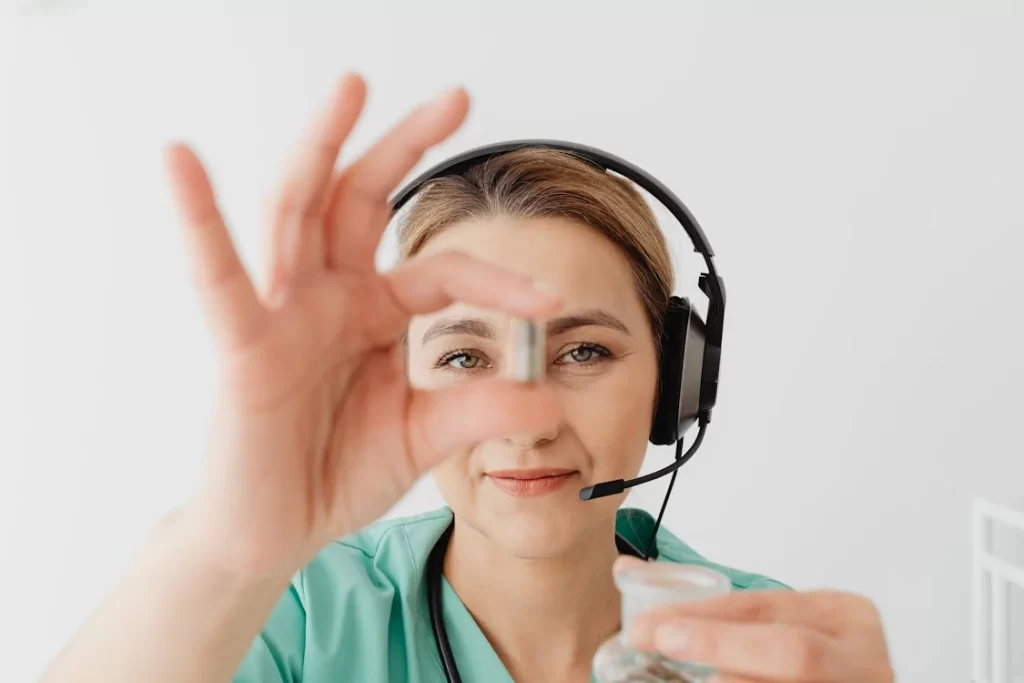Personalized medicine continues evolving as technology reshapes treatment strategies in modern healthcare settings. Data analytics, wearable devices, and artificial intelligence contribute significantly to individualized patient care.
These innovations enable healthcare professionals to develop interventions aligned with patient-specific needs and conditions. Real-time health data, predictive analytics, and automated tools help optimize medical decision-making processes. Precision medicine relies on technology-driven solutions to enhance treatment efficacy and patient outcomes.
Healthcare providers must integrate new technologies into daily practice to ensure effective care.
In this article, we’ll explore how emerging innovations enhance personalized treatment plans and improve overall healthcare delivery.
Harnessing AI and Big Data for Precision Medicine
Artificial intelligence and big data analytics are revolutionizing personalized medicine by uncovering critical patterns in patient data. AI-driven algorithms enhance healthcare in several key areas:
- Predicting disease progression and recommending targeted therapies through advanced data analysis.
- Assisting in drug discovery efforts to accelerate the development of new treatment options.
- Streamlining clinical decision-making by providing data-driven insights for healthcare professionals.
- Supporting oncologists in developing effective treatment regimens based on molecular profiling and precision medicine.
National Cancer Institute notes that AI technology accelerates genetic subtyping of brain tumors during surgery, enabling faster treatment decisions for patients.
Researchers developed an AI model using digital pathology slides to predict survival outcomes for breast cancer patients. Advanced AI integrates histopathology and molecular data, improving brain cancer outcome predictions better than single-data-type models.
Healthcare professionals benefit from AI-based solutions that optimize treatment plans for complex medical conditions. Big data plays a crucial role in supporting AI technologies for better patient care.
Advancing Disease Management Through Institutional Health Monitoring
Technology improves chronic disease management through continuous health monitoring and real-time data collection for clinical decisions. Monitoring solutions track vital signs, detect abnormalities early, and help physicians implement timely interventions for patients.
Early identification of health risks prevents complications, reduces emergency visits, and minimizes hospital readmissions for chronic conditions. Physicians analyze patient-generated health data, modify treatments, and provide lifestyle recommendations based on real-time insights.
Automated alerts inform healthcare providers about significant health changes requiring immediate attention and further medical evaluation. These technologies enhance medication adherence, ensuring patients follow prescribed regimens and receive appropriate treatment adjustments when necessary.
Remote patient monitoring solutions provide healthcare professionals with continuous oversight and valuable data without requiring frequent in-person consultations. Continuous monitoring improves personalized care, allowing tailored treatment plans based on specific patient health trends and progress.
Healthcare IT News states that remote patient monitoring faces challenges due to complex logistics, but AI simplifies data interpretation for patients. AI-driven tools transform vast health data into clear, actionable insights that improve patient engagement and decision-making.
Continuous AI analysis detects subtle health changes early, allowing timely interventions that enhance outcomes and reduce hospitalizations.
A Look at Remote Patient Monitoring Software
Remote patient monitoring software collects, transmits, and analyzes real-time health data for chronic disease management strategies. These platforms integrate wearable devices, biosensors, and mobile applications to track key health indicators remotely.
Healthcare providers assess patient data, identify trends, and adjust treatment plans based on continuous monitoring insights. Customizable alerts notify clinicians about significant health changes, enabling quick responses to prevent severe complications.
According to CoachCare, these software packages are integrated with secure cloud-based storage systems to ensure regulatory compliance while protecting patient data from breaches. AI-driven analytics help identify patterns, predict potential risks, and support proactive decision-making in patient care. Patients benefit from fewer in-person visits while receiving personalized medical attention.
Healthcare professionals face challenges related to interoperability, training, and security when implementing these advanced monitoring solutions. Effective utilization of remote patient monitoring software improves treatment precision, enhances patient outcomes, and reduces the burden on healthcare facilities.
As per Precedence Research, the remote patient monitoring software market was worth $11.48 billion globally in 2024. Industry projections estimate it will reach $229.87 billion by 2034, growing at an annual rate of 34.94%. Increased healthcare demand in rural and remote regions continues driving market expansion worldwide.
The Impact of Wearable Health Technologies on Patients
Wearable health technologies significantly improve patient monitoring by offering continuous real-time data collection for clinicians. Smartwatches, biosensors, and implantable monitors track vital signs, activity levels, and biochemical markers accurately. Physicians analyze wearable-generated data to detect early warning signs of disease progression and complications.
Zion Market Research mentions that the global wearable health tech market reached $41 billion in 2023, showing strong growth momentum. Analysts expect it to expand to $70 billion by 2032, driven by rising consumer demand. Annual growth rates indicate a nearly 12% increase from 2024 to 2032, reflecting advancements in health technology.
Wearables enhance chronic disease management by providing instant feedback on medication adherence and lifestyle choices. Healthcare providers utilize wearable devices to adjust treatment plans and recommend personalized lifestyle modifications.
These technologies bridge gaps between traditional in-clinic assessments and real-world patient health monitoring practices. Continuous tracking empowers patients to manage their health more effectively between medical appointments.
FAQs
How does AI influence surgical decision-making?
AI provides surgeons with predictive models that assess risks and recommend the best procedural approach. Real-time analytics during surgery enhance precision by integrating patient-specific anatomical data. These tools help reduce surgical errors and improve post-operative recovery.
What is the role of gamification in chronic disease management?
Gamification engages patients by using rewards, challenges, and progress tracking to encourage healthy behaviors. Digital health platforms incorporate gamification to improve medication adherence and lifestyle changes. This approach increases patient motivation and long-term commitment to disease management.
How do patients stay engaged with remote monitoring?
Mobile applications, interactive dashboards, and real-time feedback help patients stay engaged with their health. Personalized insights improve adherence to therapy and self-care practices. Improved involvement leads to better patient outcomes and preventative disease management.
AI, big data, and wearable tech are transforming healthcare by shifting from reactive to proactive care. This integration creates a dynamic system where real-time data continuously adapts treatment for better outcomes. Remote monitoring technology is revolutionizing patient-provider interactions by enabling personalized and continuous healthcare access.
Seamless data integration allows medical providers to make educated decisions based on real-time patient information. User-friendly interfaces make these advancements more accessible, which boosts patient involvement and overall healthcare efficiency. Robust security mechanisms are required to safeguard sensitive health information and retain patient confidence.




